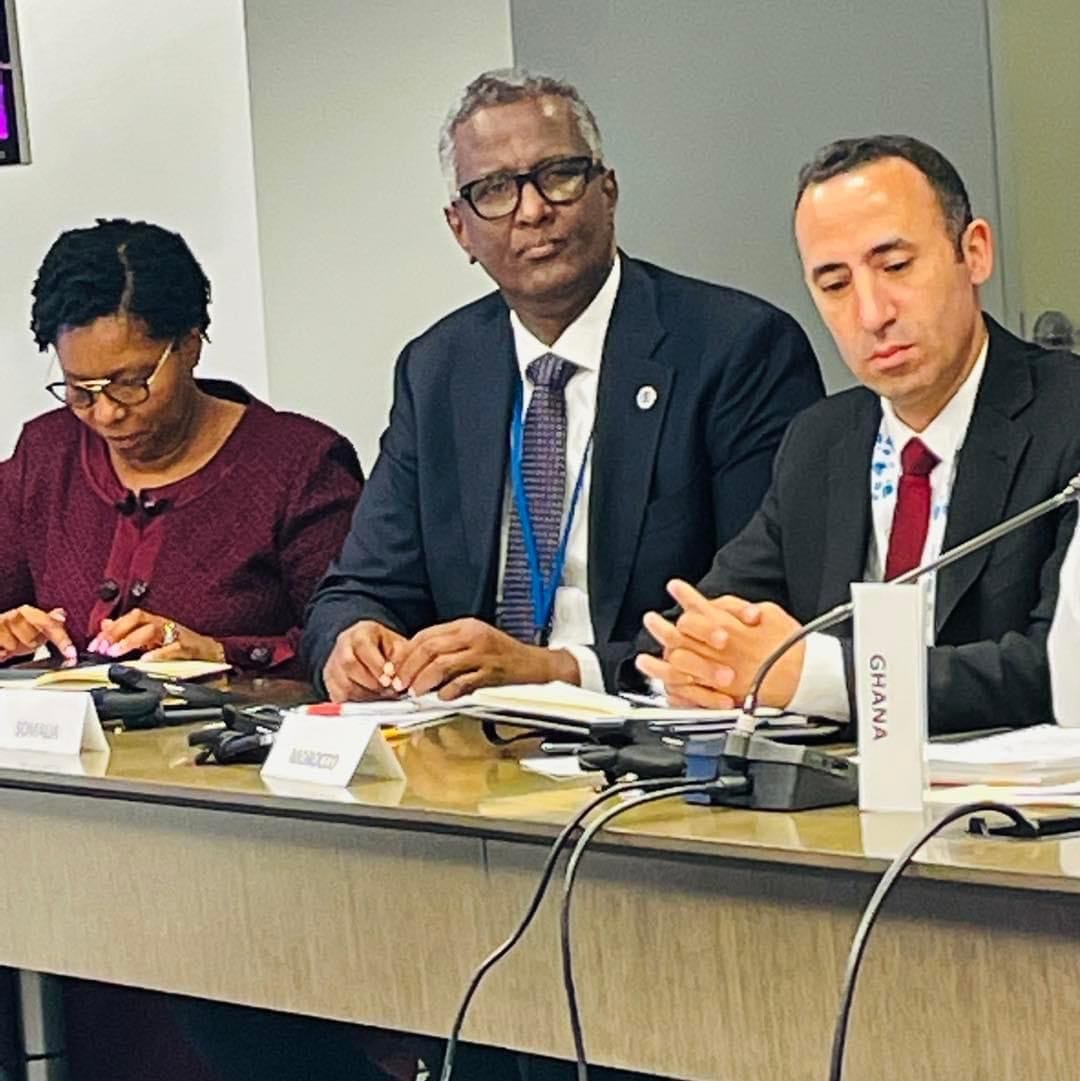Debt burden top of agenda at 2023 World Bank Spring meeting

GOOBJOOG NEWS | WASHINGTON: As Bankers, finance ministers, and stakeholders in economic development and growth gather in Washington in the United States of America for the annual International Monetary Fund and World Bank spring meeting, a topic of concern among many African Countries is the increasing debt burden and possible solutions to reduce the debts.
Somalia’s Special Presidential Envoy for Drought Response participated in the conference where African leaders met and discussed ways to unite in convincing the global financial institutions to ease the debt burden on the continent.
During the meeting, which was chaired by the Deputy Secretary General of the United Nations Amina J Mohamed effective discussions, positive criticisms, and sensible suggestions were discussed.
African lobbies including the African Sovereign Debt Justice Network (AfSDJN), the Pan-African Lawyers Union (PALU), the African Forum for Debt and Development (Afrodad) as well as Open Society for Southern Africa (OSISA), opine that the two lenders known as the Bretton-Woods institutions should increase concessional financing for climate action and urgent liquidity needs in African countries without piling more debt on them.
The continent’s biggest problem however is staying afloat while repaying debt. A recent study shows that African countries which carry the biggest debt burden are also among the most climate vulnerable.
“Climate-related disasters on the continent are shrinking the financial resources of countries. These losses are currently estimated at $7-15 billion a year and could potentially rise to $30 billion by 2030. From 2021 to 2030, Africa will require $280 billion for its adaptation and mitigation needs,” says AfSDJN in their study released ahead of Spring Meetings due from April 10.
Generous Gesture
The AfSDJN in their study also observes that the generous gesture by some advanced economies to apportion their SDRs (special drawing rights) to developing countries through the IMF Resilience and Sustainability Trust (RST) to finance climate resilience falls far short of what African economies need.
SDRs are special claims to currency held by the IMF member countries for which they may exchange for actual money. Countries generally use them to address emergency fiscal shortages.
They further argue that many of these countries continue to be burdened by fiscal consolidation or austerity in the loan programs approved under the IMF RST so far.
“It is imperative that debt relief be considered an option for the contributions of developed countries and in the same breath, contributions must be made by developed countries based on their contributions to GHG emissions,” opines African Wildlife Foundation Global Leadership Vice President Fred Kumah.
According to the International Monetary Fund (IMF) Somalia will be eligible for debt relief from the global lender by the end of the year due to reforms that have seen a boost in revenue collection and fiscal transparency.
Decision Point
Somalia reached the decision point for IMF debt relief under the Heavily Indebted Poor Countries (HIPC) Initiative in March 2020, which saw its debt stock reduce to $3.7 billion from the $5.2 billion it had accumulated by December 2018.
The full debt relief will reduce Somalia’s debt to $557 million, about 10 percent of its gross domestic product, allowing it headroom to address multiple shocks affecting its economic growth and development.
Last month, a team of IMF staff met with Somali authorities – including finance and planning ministers and the Central Bank of Somalia (CBS) governor – after which the lender said the country is making progress towards the HIPC completion point prerequisites despite some challenges.
“The authorities are committed to continuing to improve revenue collection and make room for priority spending while containing discretionary expenditure pressures,” said Laura Jaramillo, who led the IMF team.
- By Fauxile Kibet